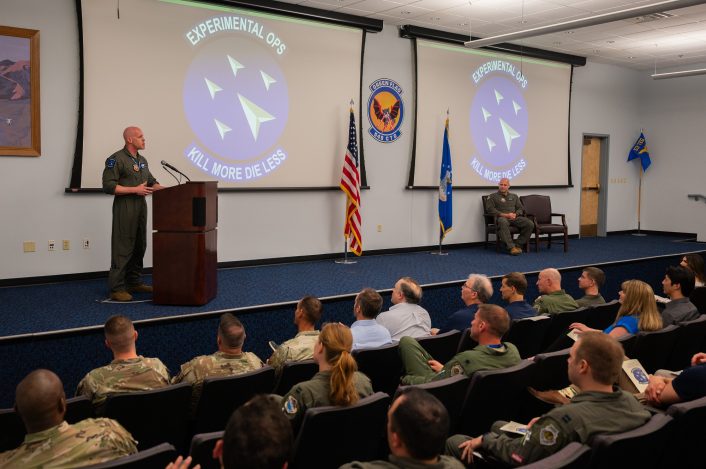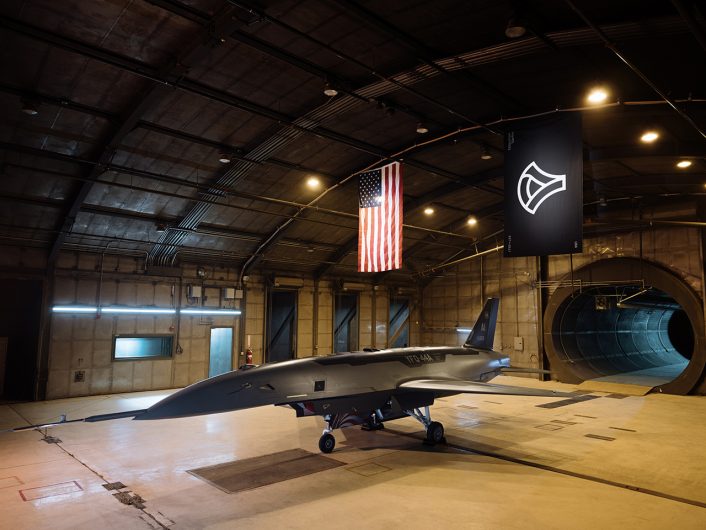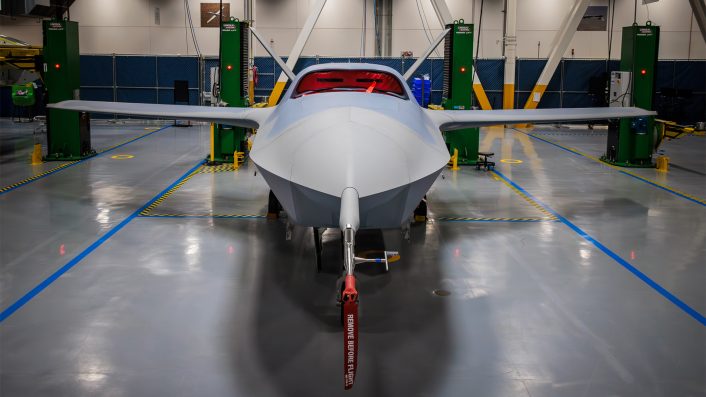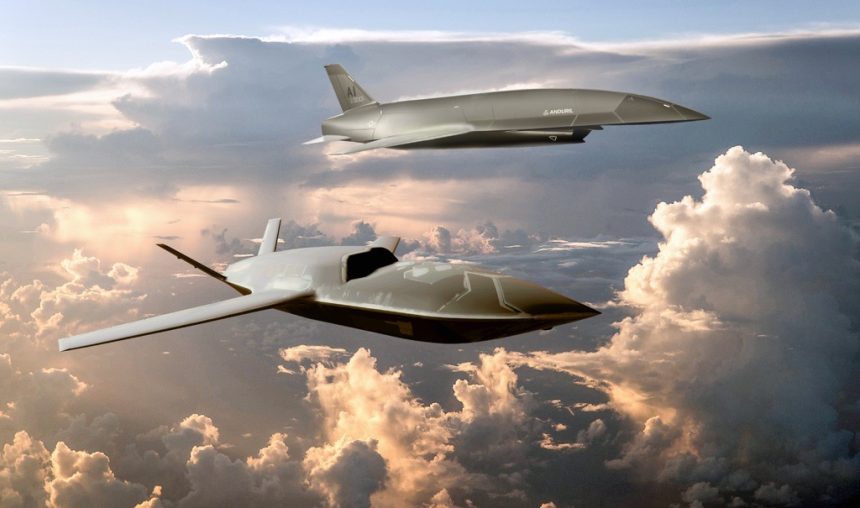The Experimental Operations Unit will help accelerate the integration of Collaborative Combat Aircraft in service.
The U.S. Air Force has announced the activation of an Experimental Operations Unit (EOU) at Nellis Air Force Base, Nevada, to accelerate the introduction of Collaborative Combat Aircraft (CCA). The unit, which will be subordinated to Eglin AFB’s 53rd Wing, has operated as a detachment since 2023, but has now been elevated to a fully operational squadron equivalent, said the service in a press release.
“This is a pivotal moment for our force,” said Col. Daniel Lehoski, 53rd wing commander. “The EOU embodies our commitment to rapid innovation and ensuring our warfighters have the most advanced tools to dominate the future battlespace. They are ready to reduce risk in concurrency and deliver capability faster.”
Another milestone down in delivering CCA to our warfighters! We activated an Experimental Operations Unit @NellisAFB to be an operational squadron. This unit is dedicated to testing and refining human-machine teaming concepts to dominate the battlespace. https://t.co/HzBjdNSXjM pic.twitter.com/6wSqNRBIiA
— General David Allvin (@OfficialCSAF) June 6, 2025
The Experimental Operations Unit
The service explained that the activation of the EOU marks “a significant step forward in the Department of the Air Force’s focus to deliver substantial operational capability for Collaborative Combat Aircraft Increment 1 before the end of the decade.” This new development also follows the selection of Beale Air Force Base, California, as the preferred location to host a CCA Aircraft Readiness Unit (ARU) and the start of the ground testing of the YFQ-42A and YFQ-44A production representative test vehicles in May 2025.
The CCAs will be the first platform to enter service with a higher degree of autonomy, and the Air Force is working hard to make sure it can be safely integrated to support current and future generation crewed fighters. Making sure the autonomy agents carefully follow all assigned instructions is a big part of the work, as noted by the service by saying that the “deliberate development of mission autonomy [is] tightly coupled with a principled protection of human decision-making.”
The Air Force further explained the role of the EOU, saying it “will play a key role” in the introduction of these uncrewed force multipliers, “providing a proving ground for testing and refining human-machine teaming concepts for CCA in realistic scenarios.” As the service plans to have each crewed aircraft control a number of CCAs, it is fundamental the drones can be easily controlled by the pilot at all times, without increasing the workload, and they can cooperate to achieve mission’s success.

“We are here to accelerate the delivery of combat-ready capabilities to the warfighter,” said Lt. Col. Matthew Jensen, EOU commander. “Our experimental operations will ensure that CCA are immediately viable as a credible combat capability that increases Joint Force survivability and lethality.”
The choice of Nellies AFB is not casual, as the service explained “the EOU will integrate into the Virtual Warfare Center and the Joint Integrated Test and Training Center Nellis [JITTC-N] to conduct realistic simulations and refine non-materiel considerations of CCA employment concepts in a virtual environment.” It is important to note that the JITTC-N oversees the operation of the Joint Simulation Environment (JSE), the new realistic simulated battlespace with high-density threat environment and high-fidelity platform representation, created to train 5th gen aircraft operations in “an unprecedented level of fidelity.”
In future, the EOU will also “conduct live-fly experiments to verify simulation results and optimize tactics, techniques and procedures,” added the service. While a timeline is not available, it is possible that this phase will start once the initial flight testing of the CCAs is complete.
“Our vision is to create a collaborative combat ecosystem that is more agile, adaptable and lethal,” Jensen said. “This will enable our forces to dominate the future battlespace and achieve decisive advantages in complex, contested environments.”

Testing the CCAs
The U.S. Air Force Chief of Staff Gen. David Allvin announced in May 2025 that the service has started the ground testing of the YFQ-42A and YFQ-44A production representative test vehicles as part of the Collaborative Combat Aircraft (CCA) program. The General described this as “a key milestone for the CCA Increment 1 program,” ahead of the first flights expected during Summer 2025.
Additionally, the Department of the Air Force also announced it selected Beale Air Force Base, California, as the preferred location to host a CCA Aircraft Readiness Unit (ARU). The mission of the ARU will be “to provide combat aircraft ready to deploy worldwide at a moment’s notice,” said the statement.
The announcement comes two months after the U.S. Air Force announced the official designation of the first two CCAs, the YFQ-42A and YFQ-44A production representative test vehicles developed by General Atomics and Anduril, respectively.

“We’re moving fast because the warfighter needs this capability,” Allvin said. “CCA is about delivering decisive advantage in highly contested environments. The program is accelerating fielding through innovative design and acquisition strategies—and both vendors are meeting or exceeding key milestones. These aircraft will help us turn readiness into operational dominance.”
“The CCA program prioritizes speed, flexibility, and cost-effectiveness,” said the DAF. This is done by leveraging open architectures and commercial technologies, which have become in recent years a mantra for the military as they allow for rapid integration, iterative upgrades, and scalable production while keeping the costs under control.
The ground test phase will see rigorous evaluations of the YFQ-42A and YFQ-44A production representative test vehicles, focusing on propulsion systems, avionics, autonomy integration, and ground control interfaces, said the service. These assessments will validate performance, inform future design decisions, and prepare the two aircraft to move to the flight testing phase later this year.









